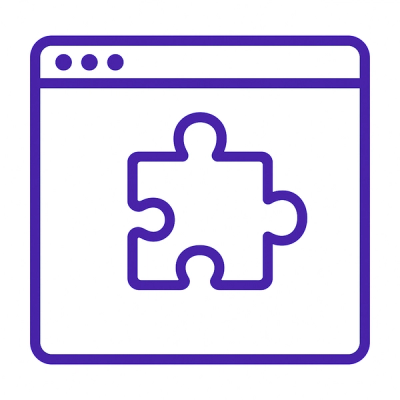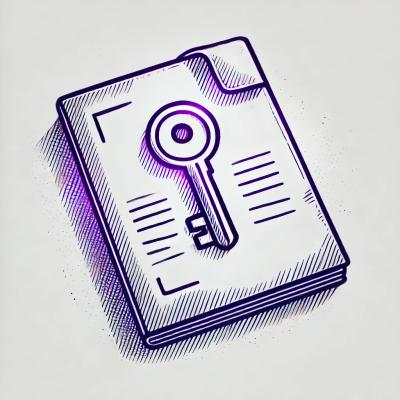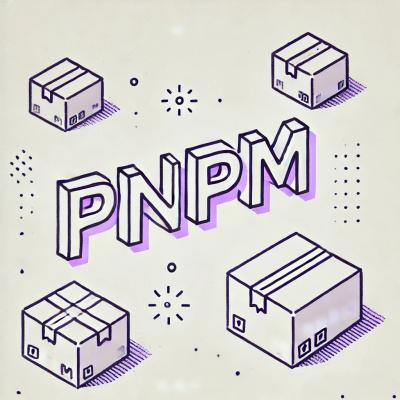
Research
Security News
The Growing Risk of Malicious Browser Extensions
Socket researchers uncover how browser extensions in trusted stores are used to hijack sessions, redirect traffic, and manipulate user behavior.
python2-pythondialog
Advanced tools
A Python interface to the UNIX dialog utility and mostly-compatible programs (Python 2 backport)
This version is a backport of pythondialog to Python 2. Unless you
really have to use Python 2, you should go to the pythondialog home page_ and download the reference implementation which, at the time of
this writing (December 2019) and for the foreseeable future, is targeted
at Python 3.
.. _pythondialog home page: http://pythondialog.sourceforge.net/
This version is only here to help users who are somehow forced to still
use Python 2, even though Python 3.0 was released on December 3, 2008.
Python 2 has reached its end of life <https://www.python.org/doc/sunset-python-2/>_, and so does this
backport. This backport is now unsupported. Don't expect any further
updates.
If, despite all of these warnings, you still want to use it, be sure to
read the Backport-specific notes_ below.
pythondialog is a Python wrapper for the UNIX dialog_ utility originally written by Savio Lam and later rewritten by Thomas E. Dickey. Its purpose is to provide an easy to use, pythonic and as complete as possible interface to dialog_ from Python code.
.. _dialog: https://invisible-island.net/dialog/dialog.html
pythondialog is free software, licensed under the GNU LGPL (GNU Lesser General Public License). Its home page is located at:
http://pythondialog.sourceforge.net/
and contains a short example, screenshots, a summary of the recent changes, links to the documentation, the Git repository, the
mailing list, the issue tracker_, etc.
.. _short example: http://pythondialog.sourceforge.net/#example .. _screenshots: http://pythondialog.sourceforge.net/gallery.html .. _summary of the recent changes: http://pythondialog.sourceforge.net/news.html .. _documentation: http://pythondialog.sourceforge.net/doc/ .. _Git repository: https://sourceforge.net/p/pythondialog/code/ .. _mailing list: https://sourceforge.net/p/pythondialog/mailman/ .. _issue tracker: https://sourceforge.net/p/pythondialog/_list/tickets
If you want to get a quick idea of what this module allows one to do,
you can download a release tarball and run demo.py::
PYTHONPATH=. python2 examples/demo.py
Notes:
python2 because we want to use the
Python 2 backport of pythondialog;python2 with
python or python2.7, for instance.As you might infer from the name, dialog is a high-level program that
generates dialog boxes. So is pythondialog. They allow you to build nice
interfaces quickly and easily, but you don't have full control over the
widgets, nor can you create new widgets without modifying dialog itself.
If you need to do low-level stuff, you should have a look at ncurses_
(cf. the curses module in the Python standard library), blessings_
or slang instead. For sophisticated text-mode interfaces, the Urwid Python library_ looks rather interesting, too.
.. _ncurses: https://invisible-island.net/ncurses/ncurses.html .. _blessings: https://github.com/erikrose/blessings .. _Urwid Python library: http://excess.org/urwid/
This now unsupported backport of pythondialog requires Python 2.6 or later in the 2.x series. It has been tested with Python 2.7.
The reference implementation supports more recent versions of the
Python interpreter. Please visit the pythondialog home page_ for
more information.
Apart from that, pythondialog requires the dialog_ program (or a drop-in replacement for dialog). You can download dialog from:
https://invisible-island.net/dialog/dialog.html
Note that some features of pythondialog may require recent versions of dialog.
If you have a working pip <https://pypi.org/project/pip/>_ setup,
you should be able to install this backport of pythondialog with::
pip install python2-pythondialog
When doing so, make sure that your pip executable runs with the
Python 2 installation you want to install the backport for.
For more detailed instructions, you can read the INSTALL file from a
release tarball. You may also want to consult the pip documentation <https://pip.pypa.io/>_.
The pythondialog documentation is written for the reference implementation (Python 3 at the time of this writing). To be on the safe side when using the Python 2 backport, you should use Unicode strings every time you pass “string data” to pythondialog, and you will get Unicode strings in return. Indeed, these correspond directly to Python 3 strings, and modern versions of pythondialog (>= 2.12) are all based on this type of string.
The pythondialog documentation consistently uses the term “string” (as opposed to “Unicode string”) because it has been written for Python 3, but you should definitely use Unicode strings when using the Python 2 backport. Many things happen to work with byte strings, but in most cases, this is pure coincidence; others fail, and won't be fixed. This is not a bug.
The easiest way to use Unicode strings everywhere (or almost everywhere) in Python 2.x with x >= 6, consists in using::
from future import unicode_literals
at the beginning of your Python files. This method has the additional benefit of preparing your transition to Python 3.
Don't use str() in Python 2 on objects such as pythondialog
exceptions or dialog.DialogBackendVersion instances; use
unicode() instead, which is the Python 2 equivalent of the
Python 3 str() built-in. Of course, using repr() on any
pythondialog object should return a byte string when run under
Python 2, because this is how the repr() API works in Python 2.
The same holds true for str(), but this one is not supported by
the Python 2 backport of pythondialog: it is superseded, as already
explained, by the much more powerful unicode().
Before taking potentially expensive decisions, you should realize that
Unicode support is much, much better in Python 3 than in Python 2,
even though the basic types are largely the same (Unicode string in
Python 2, native string in Python 3). In Python 3, native strings
(simply called “strings” in the Python documentation) are natural and
ubiquitous. They can be read and written from/to the standard I/O
streams with sane encoding defaults. str() and repr() return
native strings, as do all standard library calls whenever expected
(i.e., when the return value is text, as opposed to binary data).
Python 3 strings are both powerful and easy to use.
By contrast, in Python 2, you always have to be very careful about what you manipulate: byte strings or Unicode strings. Most library calls in your code are a potential source of bug. Usually, this kind of bug only pops up when user data or input introduces non-ASCII characters in a byte string that is then either combined with an Unicode string, or used in a context where the expected encoding is different. This means that some users get annoyed by “crappy” software, while the responsible developers are often not aware of any problem---until a bug report is filed, if ever.
Want to use traceback.format_exc() for instance? What does it
return, byte string or Unicode string? Experiment. Answer: byte
string. Then, how does it deal with, e.g., accented characters in an
OSError exception message? Experiment. Answer: it outputs the
repr() representation of an Unicode string that uses backslash
escapes for the non-ASCII characters, all of this inside the returned
byte string. Conclusion: the messages seen by users will be very ugly
and more or less undecipherable for many of them. Does it behave this
way in all cases? Tough question. Use the source, Luke...
With other library calls, you might get non-ASCII characters in a byte string. Then, the question would be: what encoding has been used to encode them, and is there a reliable way to detect it? In many cases, this is not documented and/or depends on parameters under user control, such as the locale settings. Again, you have to waste time figuring out the encoding, and often can't be sure whether your answer is correct in all cases.
Bottom line:
There are good reasons why the Python developers broke compatibility at such a fundamental level as string management between Python 2 and Python 3. Getting Unicode support completely right in Python 2 may require more work than porting your code to Python 3. Besides, future maintainance and evolutions of your program will definitely be easier once it is written in Python 3. Think about it.
Important: be sure to read the Backport-specific notes_ above.
The pythondialog Manual ^^^^^^^^^^^^^^^^^^^^^^^
The pythondialog Manual is written in reStructuredText_ format for the
Sphinx_ documentation generator. The HTML documentation for the latest
version of pythondialog as rendered by Sphinx should be available at:
http://pythondialog.sourceforge.net/doc/
.. _pythondialog Manual: http://pythondialog.sourceforge.net/doc/ .. _reStructuredText: http://docutils.sourceforge.net/rst.html .. _Sphinx: https://www.sphinx-doc.org/en/master/ .. _LaTeX: https://www.latex-project.org/ .. _Make: https://www.gnu.org/software/make/
The sources for the pythondialog Manual are located in the doc
top-level directory of the pythondialog distribution, but the
documentation build process pulls many parts from dialog.py (mainly
docstrings).
Note:
Generation of the pythondialog Manual with Sphinx_ has only been
tested, and is only supported with the reference implementation of
pythondialog (i.e., currently, on Python 3). As a consequence, the
package containing this file may be fine to read or grep through the
.rst files; however, if compilation of said .rst files with
Sphinx_ on Python 2 doesn't work, it is not considered a
bug---simply download the reference implementation if you want to do
that.
To generate the documentation yourself from dialog.py and the
sources in the doc directory, first make sure you have Sphinx_ and
Make_ installed. Then, you can go to the doc directory and type,
for instance::
make html
You will then find the output in the _build/html subdirectory of
doc. Sphinx_ can build the documentation in many other formats.
For instance, if you have LaTeX_ installed, you can generate the
pythondialog Manual in PDF format using::
make latexpdf
You can run make from the doc directory to see a list of the
available formats. Run make clean to clean up after the
documentation build process.
For those who have installed Sphinx_ but not Make_, it is still
possible to build the documentation with a command such as::
sphinx-build -b html . _build/html
run from the doc directory. Please refer to sphinx-build_ for more
details.
.. _sphinx-build: https://www.sphinx-doc.org/en/master/man/sphinx-build.html
Reading the docstrings from an interactive Python interpreter ^^^^^^^^^^^^^^^^^^^^^^^^^^^^^^^^^^^^^^^^^^^^^^^^^^^^^^^^^^^^^
If you have already installed pythondialog, you may consult its docstrings in an interactive Python interpreter this way::
import dialog; help(dialog)
but only parts of the documentation are available using this method, and
the result is much less convenient to use than the pythondialog Manual_ as generated by Sphinx_.
There are a few places in dialog.py that send a
DeprecationWarning to warn developers about obsolete features.
However, because of:
you have to do two things in order to see them:
For instance, to see the warnings produced when running the demo, you can do::
PYTHONPATH=. python2 -Wd examples/demo.py 2>/path/to/file
and examine /path/to/file. This can also help you to find files that
are still open when your program exits.
Note:
If your program is terminated by an unhandled exception while stderr is redirected as in the preceding command, you won't see the traceback until you examine the file stderr was redirected to. This can be disturbing, as your program may exit with no apparent reason in such conditions.
For more explanations and other methods to enable deprecation warnings, please refer to:
https://docs.python.org/3/whatsnew/2.7.html
If you have a problem with a pythondialog call, you should read its
documentation and the dialog(1) manual page. If this is not enough, you
can enable logging of shell command-line equivalents of all dialog calls
made by your program with a simple call to Dialog.setup_debug(),
first available in pythondialog 2.12 (the expand_file_opt parameter
may be useful in versions 3.3 and later). An example of this can be
found in demo.py from the examples directory.
As of version 2.12, you can also enable this debugging facility for
demo.py by calling it with the --debug flag (possibly combined
with --debug-expand-file-opt in pythondialog 3.3 and later, cf.
demo.py --help).
As far as I can tell, Xdialog_ has not been ported to GTK+_ version
2 or later. It is not in Debian_ stable nor unstable (November 30, 2019).
It is not installed on my system (because of the GTK+ 1.2 dependency),
and according to the Xdialog-specific patches I received from Peter
Åstrand in 2004, was not a drop-in replacement for dialog_ (in
particular, Xdialog seemed to want to talk to the caller through stdout
instead of stderr, grrrrr!).
.. _Xdialog: http://xdialog.free.fr/ .. _GTK+: https://www.gtk.org/ .. _Debian: https://www.debian.org/
All this to say that, even though I didn't remove the options to use
another backend than dialog, nor did I remove the handful of little,
non-invasive modifications that help pythondialog work better with
Xdialog_, I don't really support the latter. I test everything with
dialog, and nothing with Xdialog.
That being said, here is the old text of this section (from 2004), in case you are still interested:
Starting with 2.06, there is an "Xdialog" compatibility mode that you can use if you want pythondialog to run the graphical Xdialog program (which should be found under http://xdialog.free.fr/) instead of dialog (text-mode, based on the ncurses library).
The primary supported platform is still dialog, but as long as only small modifications are enough to make pythondialog work with Xdialog, I am willing to support Xdialog if people are interested in it (which turned out to be the case for Xdialog).
The demo.py from pythondialog 2.06 has been tested with Xdialog 2.0.6 and found to work well (barring Xdialog's annoying behaviour with the file selection dialog box).
Well, pythondialog seems not to work very well with whiptail. The reason is that whiptail is not compatible with dialog anymore. Although you can tell pythondialog the program you want it to invoke, only programs that are mostly dialog-compatible are supported.
pythondialog was originally written by Robb Shecter. Sultanbek Tezadov
added some features to it (mainly the first gauge implementation, I
guess). Florent Rougon rewrote most parts of the program to make it more
robust and flexible so that it can give access to most features of the
dialog program. Peter Åstrand took over maintainership between 2004 and
2009, with particular care for the Xdialog_ support. Florent Rougon
took over maintainership again starting from 2009...
..
FAQs
A Python interface to the UNIX dialog utility and mostly-compatible programs (Python 2 backport)
We found that python2-pythondialog demonstrated a healthy version release cadence and project activity because the last version was released less than a year ago. It has 1 open source maintainer collaborating on the project.
Did you know?

Socket for GitHub automatically highlights issues in each pull request and monitors the health of all your open source dependencies. Discover the contents of your packages and block harmful activity before you install or update your dependencies.

Research
Security News
Socket researchers uncover how browser extensions in trusted stores are used to hijack sessions, redirect traffic, and manipulate user behavior.

Research
Security News
An in-depth analysis of credential stealers, crypto drainers, cryptojackers, and clipboard hijackers abusing open source package registries to compromise Web3 development environments.

Security News
pnpm 10.12.1 introduces a global virtual store for faster installs and new options for managing dependencies with version catalogs.